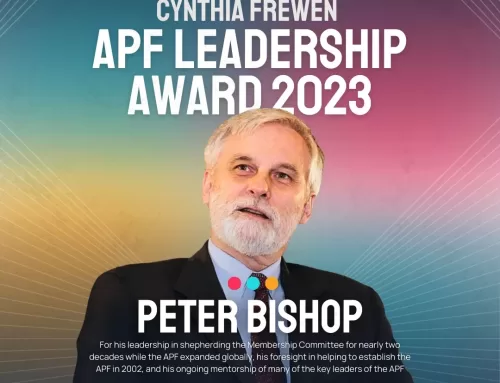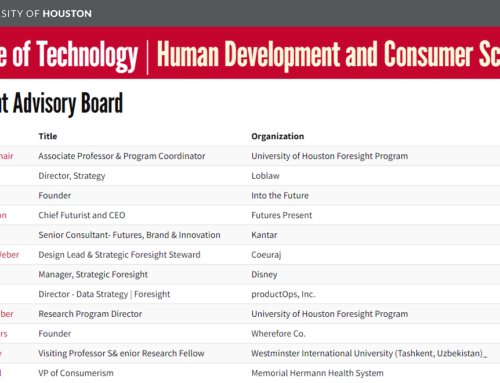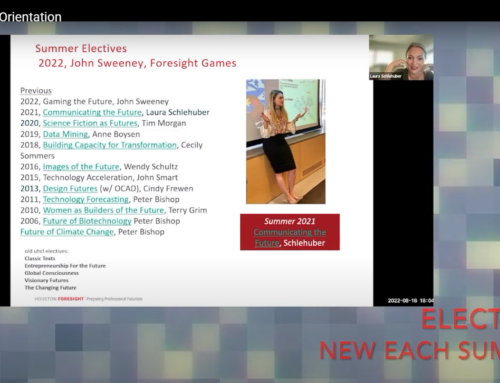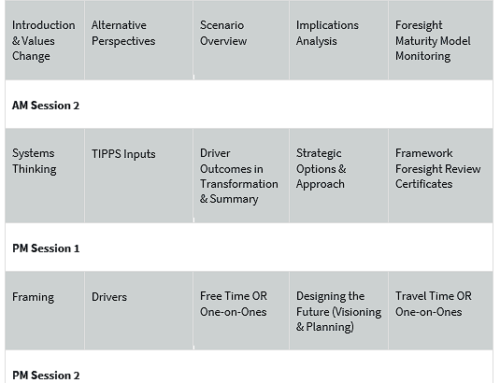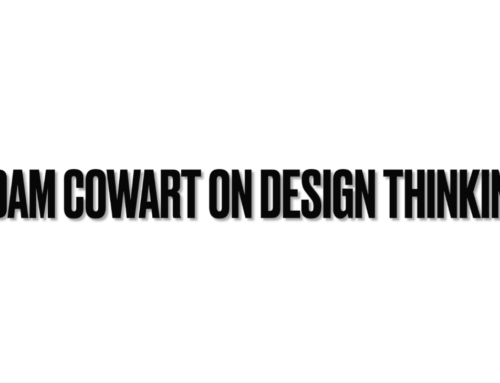 Futurist Chris Luebkeman, Arup Fellow and Global Director, who established the foresight group with the firm, visited with the combined “Intro” and “Seminar” classes of the Houston Foresight program on Monday. In 1999, Chris joined Arup as the Co-Director for Research and Development. A couple of years later, he formed the Foresight, Innovation and Incubation team, which has evolved to its present form as Foresight + Research + Innovation.
Futurist Chris Luebkeman, Arup Fellow and Global Director, who established the foresight group with the firm, visited with the combined “Intro” and “Seminar” classes of the Houston Foresight program on Monday. In 1999, Chris joined Arup as the Co-Director for Research and Development. A couple of years later, he formed the Foresight, Innovation and Incubation team, which has evolved to its present form as Foresight + Research + Innovation.
He talked about his career, his experience in starting the foresight unit, and what he’s learned along the way of doing foresight work at Arup for the last dozen years. His background included bridge design, which led him to a “Home of the Future” project at MIT, and later launched him over to Arup. It’s interesting to note the incredible variety of backgrounds that futurists come from. A common denominator, Chris suggested, is the characteristic of “infinite curiosity.”
He offered lots of useful advice to student based on his experience. For instance, he suggest it is important to “figure out the context in which you thrive; is it alone, in teams, consulting, managing people?” He found his niche with Arup with the initial small team of five people devoted to foresight, and operating under the radar. They started driversofchange.com which has continued to thrive today. It’s a great workshop tool. He found that in using it in workshops across the world, the same themes kept emerging, and they also factored in in a STEEP lens and used it to identify issues for the group. They did very detailed research on the drivers. They would dig to the original research rather than rely on secondary reports on it, to make sure the data was right. Every idea has a pedigree and it’s good to acknowledge that.
They address all learning styles, as a key to success is to “find the entry point.” It’s about changing people’s minds. A way to think of internal customers is some love you, some don’t like you, and most are indifferent. [Might remind some of you my frogs, lemmings, vultures, and rats]. At the same time, you need to be able to speak the language of the hard-line business person.
Eventually, as they got successful, the foresight unit came out from under the radar. Internal groups started raising questions about what the unit did. This brought home the point about how important it is to “know your stock value.” How are you being value in the organization? He collects anecdotes, as he goes, to help demonstrate value, e.g., “that project was instrumental to us for launching…”
The key job in foresight work is to help others understand the context of tomorrow. Chris’s visit was an excellent infusion of “real-life” foresight that I’m sure the students will carry with them on their future journeys. Andy Hines

